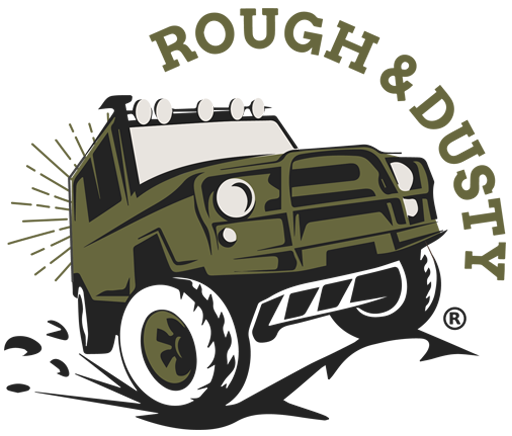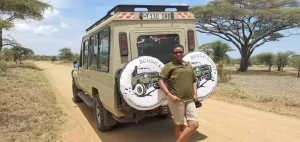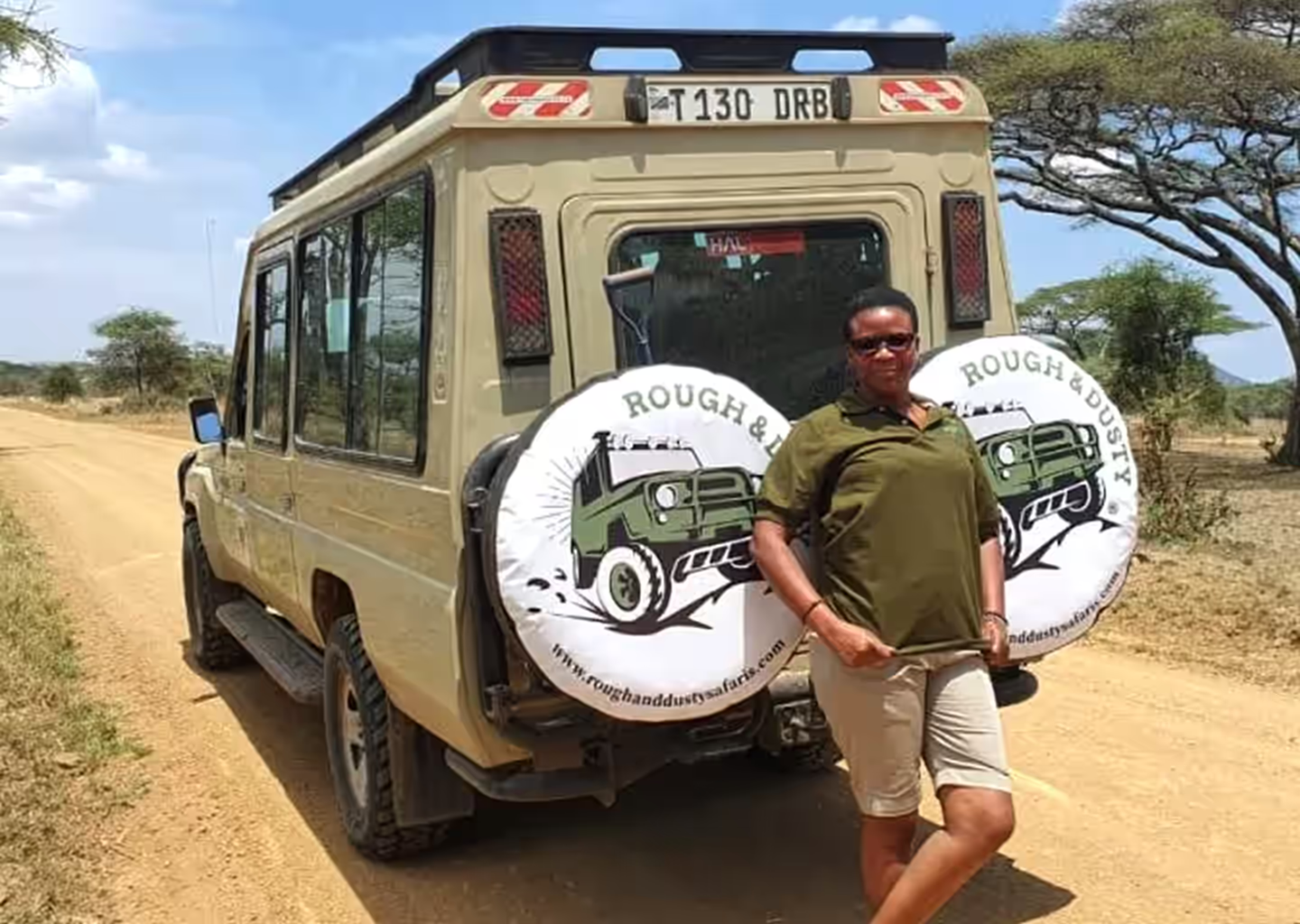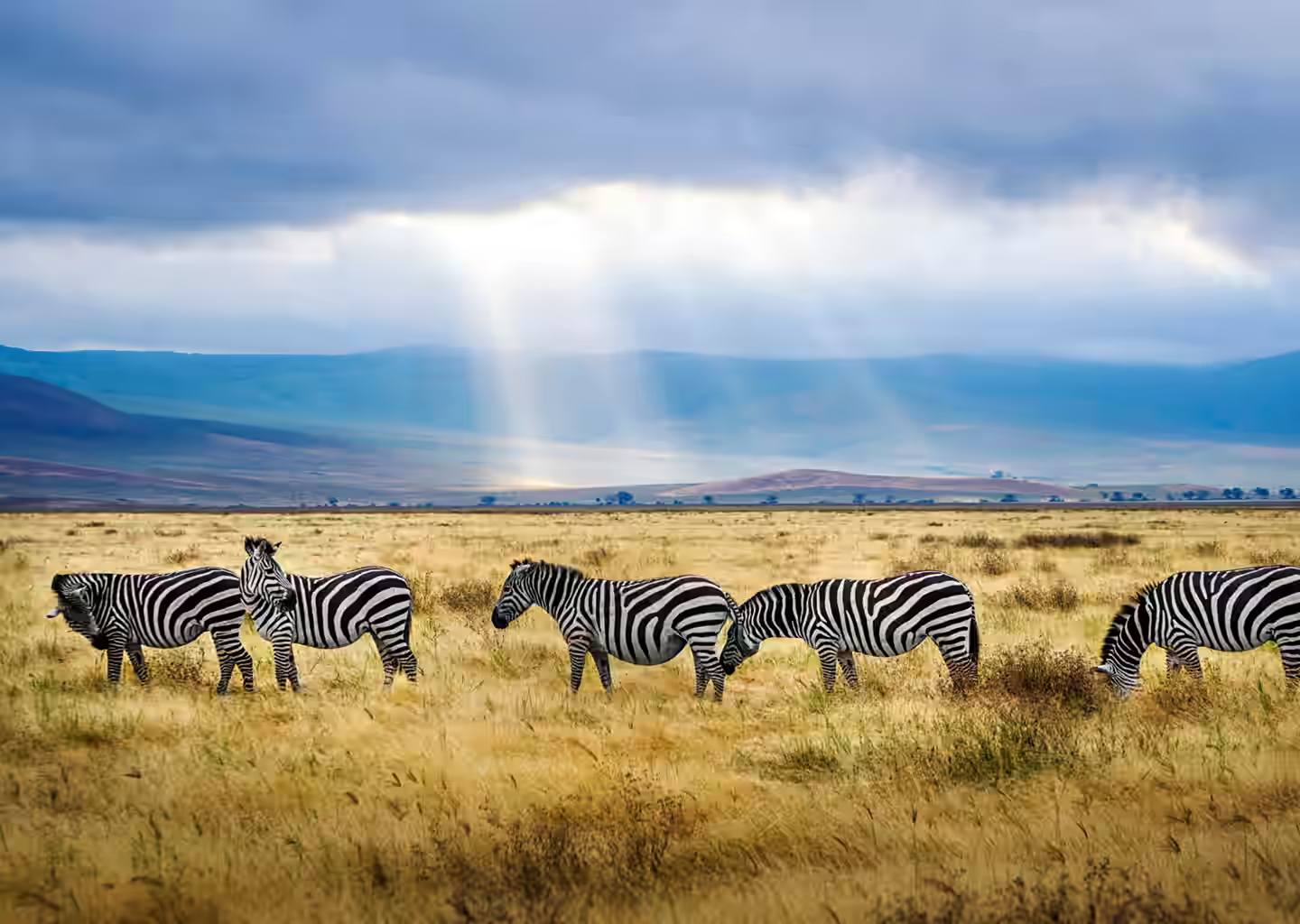Complete Guide to Tanzania Adventures: Safaris & Mountain Trekking
Tanzania is a premier destination for adventure enthusiasts, offering an unparalleled blend of wildlife safaris and mountain trekking experiences. From the vast savannas of the Serengeti, teeming with diverse wildlife, to the snow-capped peak of Mount Kilimanjaro, Africa’s highest mountain, Tanzania provides a rich tapestry of adventures for every type of traveller.
This comprehensive guide explores the six key aspects of planning and enjoying your Tanzanian adventure:
- Budget Safari Planning
- Safari Destinations
- Wildlife & Experiences
- Mountain Trekking
- Practical Travel Info
- Combined Adventures
Whether you’re dreaming of witnessing the Great Migration, tracking the Big Five, or conquering the summit of Kilimanjaro, Tanzania offers these experiences and more. Let’s dive into the world of Tanzanian adventures and discover why this East African gem should be at the top of your travel list.
Why Choose Tanzania for Your Next Adventure?
Tanzania stands out as a top adventure destination for several compelling reasons:
- Home to Africa’s highest peak, Mount Kilimanjaro (5,895 meters)
- Hosts the annual Great Migration, one of nature’s most spectacular wildlife events
- Features the Serengeti, Ngorongoro Crater, and other world-renowned safari destinations
- Offers opportunities to see all of Africa’s “Big Five” (lion, leopard, elephant, rhino, and buffalo)
- Provides diverse landscapes, from savanna and rainforest to beaches and coral reefs
- Combines cultural experiences with Maasai communities and ancient archaeological sites
- Caters to various budgets with options ranging from luxury lodges to affordable camping safaris
Tanzania Adventures at a Glance
| Category | Description | Key Attractions | Best Time to Visit | Budget Range (USD) |
|---|---|---|---|---|
| Budget Safari Planning | Affordable wildlife viewing experiences | Tarangire, Serengeti, Ngorongoro | June-October, January-February | $150-$300 per day |
| Safari Destinations | Diverse national parks and reserves | Serengeti, Ngorongoro, Ruaha | Year-round (varies by park) | $200-$1000+ per day |
| Wildlife & Experiences | Unique animal encounters and natural phenomena | Big Five, Great Migration, chimpanzees | July-October for migration | Included in safari costs |
| Mountain Trekking | Challenging high-altitude climbs | Kilimanjaro, Mount Meru | January-March, June-October | $1500-$4000+ per trek |
| Practical Travel Info | Essential knowledge for visitors | Visa, health, transportation | Year-round | Varies |
| Combined Adventures | Blended safari and trekking experiences | Kilimanjaro + Serengeti packages | January-March, June-October | $3000-$6000+ per trip |
1. Budget Safari Planning: Your Gateway to Affordable Wildlife Encounters
What defines a budget safari in Tanzania?
A budget safari in Tanzania typically involves:
- Shared vehicle tours
- Basic accommodations (e.g., tented camps, budget lodges)
- Self-catering options or simple meal plans
- Visits to less expensive but wildlife-rich parks
- Possible use of public transportation between destinations
Top 5 tips for planning an affordable safari
- Travel during the low season (April-May) for significant discounts
- Join group safaris to share costs
- Opt for parks closer to main cities to reduce transportation expenses
- Choose budget accommodations or camping options
- Book directly with local operators to avoid agency fees
Best seasons for budget safaris
The best time for budget safaris in Tanzania is during the low season (April-May) when many lodges and tour operators offer discounts. However, this coincides with the long rainy season, so be prepared for potential weather-related challenges.
Learn more about planning your budget safari in Tanzania →
2. Safari Destinations: Exploring Tanzania’s Iconic Wildlife Havens
Overview of Tanzania’s major national parks and reserves
Tanzania boasts numerous world-class safari destinations, including:
- Serengeti National Park
- Ngorongoro Conservation Area
- Tarangire National Park
- Ruaha National Park
- Selous Game Reserve (now part of Nyerere National Park)
Comparison of popular safari circuits
- Northern Circuit: Includes Serengeti, Ngorongoro, Tarangire, and Lake Manyara. Ideal for first-time visitors and those seeking classic safari experiences.
- Southern Circuit: Features Ruaha, Nyerere (Selous), and Mikumi. Offers a more off-the-beaten-path experience with fewer crowds.
- Western Circuit: Encompasses Gombe and Mahale Mountains National Parks. Known for chimpanzee trekking and Lake Tanganyika.
Hidden gems: Lesser-known safari destinations
- Katavi National Park: Remote wilderness with large herds of buffalo and hippos
- Saadani National Park: Unique combination of beach and bush safari
- Udzungwa Mountains National Park: Hiking and primate watching in a biodiversity hotspot
Discover more about Tanzania’s diverse safari destinations →
3. Wildlife & Experiences: Unforgettable Encounters in the African Bush
Tanzania’s ‘Big Five’ and where to find them
- Lion: Serengeti, Ngorongoro, Ruaha
- Leopard: Serengeti, Ruaha, Selous
- Elephant: Tarangire, Serengeti, Ruaha
- Rhino: Ngorongoro (black rhino)
- Buffalo: Found in most parks, large herds in Katavi and Serengeti
Unique wildlife experiences
- Witness the Great Migration in Serengeti (July-October)
- Track chimpanzees in Gombe or Mahale Mountains National Parks
- Observe tree-climbing lions in Lake Manyara National Park
- Watch enormous crocodiles in Katavi National Park
- See pink flamingos at Lake Natron
Responsible wildlife viewing practices
- Maintain a safe distance from animals
- Never feed wildlife
- Follow park rules and ranger instructions
- Use binoculars for close-up views without disturbing animals
- Support eco-friendly lodges and tour operators
Explore more about Tanzania’s incredible wildlife and experiences →
4. Mountain Trekking: Conquering Africa’s Peaks
Overview of Tanzania’s trekking destinations
- Mount Kilimanjaro (5,895m): Africa’s highest peak and one of the world’s Seven Summits
- Mount Meru (4,562m): Tanzania’s second-highest mountain, offering spectacular views of Kilimanjaro
- Ol Doinyo Lengai (2,962m): Active volcano known as the “Mountain of God” to the Maasai people
- Usambara Mountains: Lush, biodiverse range perfect for day hikes and cultural experiences
Comparison of popular trekking routes
Kilimanjaro Routes:
- Marangu: Known as the “Coca-Cola” route, easiest but less scenic
- Machame: Popular “Whiskey” route with great scenery and acclimatization profile
- Lemosho: Scenic, less crowded, with good acclimatization
- Rongai: Only the northern approach, drier and less crowded
Mount Meru:
- A single route to the summit, typically completed in 3-4 days
Essential preparation tips for high-altitude treks
- Allow adequate time for acclimatization
- Train for several months before your trek
- Invest in proper gear, especially warm layers and sturdy boots
- Stay hydrated and maintain a slow, steady pace
- Listen to your guide and be prepared to turn back if experiencing altitude sickness
Learn more about mountain trekking in Tanzania →
5. Practical Travel Info: Essential Knowledge for Your Tanzania Adventure
Visa requirements and travel documents
- Most visitors require a visa, obtainable on arrival or in advance online
- The passport must be valid for at least six months beyond your planned stay
- Proof of yellow fever vaccination may be required, depending on your country of origin
Health and safety considerations
- Consult a travel doctor for recommended vaccinations and malaria prophylaxis
- Travel insurance with coverage for emergency evacuation is strongly advised
- Be aware of common travel health issues like traveller’s diarrhoea and heat exhaustion
- Exercise caution with food and water hygiene, especially in remote areas
Transportation options within Tanzania
- Domestic flights connect major cities and some national parks
- Shared and private safari vehicles are common for park visits
- Public buses are available between major towns but not recommended for park access
- Limited train services operate between select cities
Get more practical travel information for your Tanzania adventure →
6. Combined Adventures: The Best of Both Worlds
Popular safari and trekking combinations
- Kilimanjaro Trek + Serengeti Safari
- Mount Meru Climb + Ngorongoro and Tarangire Safari
- Usambara Mountains Trek + Saadani National Park Beach and Bush Safari
Sample itineraries for multi-adventure trips
14-Day Kilimanjaro and Safari Adventure:
- Days 1-2: Arrive in Arusha, acclimatization and preparation
- Days 3-9: Kilimanjaro trek (7-day Machame Route)
- Day 10: Rest day in Arusha
- Days 11-14: 4-day safari (Tarangire, Ngorongoro, Serengeti)
Tips for seamlessly blending safari and trekking experiences
- Start with the trek to acclimatize and build fitness
- Allow for a rest day between trekking and safari activities
- Pack versatile clothing suitable for both trekking and safari
- Consider using a single operator for both experiences to simplify logistics
- Optimize your itinerary to minimize travel time between destinations
Explore combined safari and trekking adventures in Tanzania →
Frequently Asked Questions About Tanzania Adventures
- What is the best time of year to visit Tanzania for safaris and trekking?
The dry season (June-October) is ideal for both safaris and trekking, offering good wildlife viewing and clear mountain conditions. January-February is also good but can be crowded. - How fit do I need to be to climb Kilimanjaro?
While no technical climbing skills are required, a good level of fitness is essential. Regular cardiovascular exercise and strength training for several months before your trek is recommended. - Can I see the Great Migration year-round in Tanzania?
The migration is a year-round event, but the best time to see river crossings in the Serengeti is typically July-October. Different aspects of the migration can be seen at other times of the year. - Are malaria precautions necessary for Tanzania safaris and treks?
Yes, malaria is present in many parts of Tanzania. Consult your doctor about appropriate prophylaxis and take measures to prevent mosquito bites. - How much does a typical safari in Tanzania cost? Costs vary widely, from about $150-$200 per day for budget safaris to $1000+ per day for luxury experiences. Factors include accommodation type, park fees, and tour operator.
- Is it safe to drink tap water in Tanzania?
It’s not recommended to drink tap water. Stick to bottled or treated water, even for brushing teeth in most areas. - Can I combine a beach holiday with a safari or trek in Tanzania?
Yes, Tanzania offers beautiful beaches on its coast and islands like Zanzibar, which can easily be combined with safari or trekking adventures. - What type of accommodation is available on Kilimanjaro treks?
Most routes use mountain huts or tented camps. The Marangu route has dormitory-style huts, while other routes primarily use tented accommodations. - Are there age restrictions for safaris or trekking in Tanzania?
There’s typically no upper age limit for safaris, but some activities may have minimum age requirements. For Kilimanjaro, the minimum age is usually 10, but it’s more common for teenagers and adults. - How close can I get to wildlife on a safari? For safety, vehicles generally maintain a minimum distance of 25 meters from most wildlife. Never attempt to approach wild animals on foot.
Tanzania offers a wealth of adventures, from thrilling wildlife encounters on safari to the challenge of summiting Africa’s highest peak. Whether you’re seeking budget-friendly options or luxurious experiences, the combination of diverse landscapes, rich wildlife, and unique cultural encounters makes Tanzania a top choice for adventure travellers.
Ready to start planning your Tanzanian safari or trekking adventure? Explore our detailed guides on budget planning, destinations, and practical travel tips to create your perfect itinerary. Let the adventure begin!



